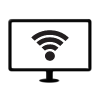Phone Charging Speed & Battery Life Performance Benchmarking
Chargers and Power Banks
Headphone & Speakers
Cases & Covers
Virtual Reality
Cables & Adapters
Media Player
Laptop
Tablet
Desktop
Cell Phone
Printers & Copiers
Memory Cards
TV
Computer Display
Game Console
Smart Home
Wearable Technology
Photo & Video Camera
Car Electronics
Car
Networking Equipment
Smart Toys
Home Audio & Video
Professional & Industrial
Storage Drive
Docking Station
Game Console Controllers
Set-top box
Keyboard, Mice, & Stylus
Portable Music Player
Computer Parts & Components
Cordless & Speakerphones
Projector
Software
Reporting
Mate20 Pro
by Huawei




Interested in this product?
Huawei Mate20 Pro- First Phone to Offer Reverse Wireless Charging and Faster SuperCharge Wired Charging Up to 40W
The Huawei Mate20 Pro has introduced several new features that eventually also appeared on the Samsung Galaxy S10+ since Huawei released its latest phone. One of these features is reverse wireless charging which the Samsung Galaxy S10+ now promotes. This dual role power capability allows the phone to wirelessly charge other Qi enabled phones such as the Apple iPhone XS Max and Google Pixel 3 XL as well as being able to be wirelessly charged itself. The Mate20 Pro was the first in the market to offer such capability along with 15W wireless charging which should be faster than the standard 10W on most Qi enabled phones.
The Mate20 Pro was also the first in its Huawei Mate series to offer triple rear cameras and likewise for the Samsung Galaxy S10+. In fact Huawei not only added another camera from the previous Mate10 Pro's dual camera setup, but also better the quality to 40MP (wide), 20MP (ultrawide) and 8MP (telephoto) cameras. By comparison the Samsung Galaxy S10+ added a new 16MP camera to its existing two 12MP rear cameras.
While continuing to support its own proprietary SuperCharge as well as USB Power Delivery and Qualcomm Quick Charge based charging over Type-C, the Mate20 Pro now claims to achieve up to 40W of charging using SuperCharge instead of just 22.5W on the previous model.
Here we can see how the Mate20 Pro looks like after purchase. The box advertises the Leica brand of cameras and triple camera setup used by the phone.
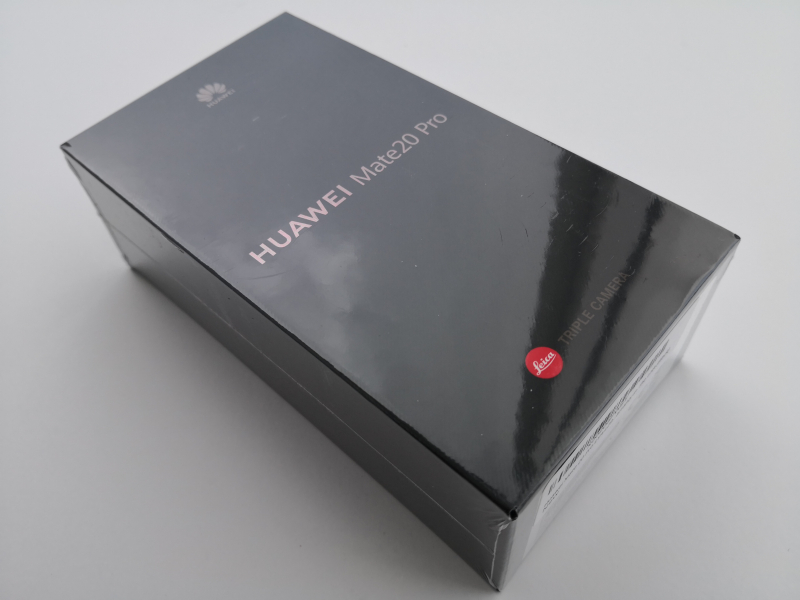
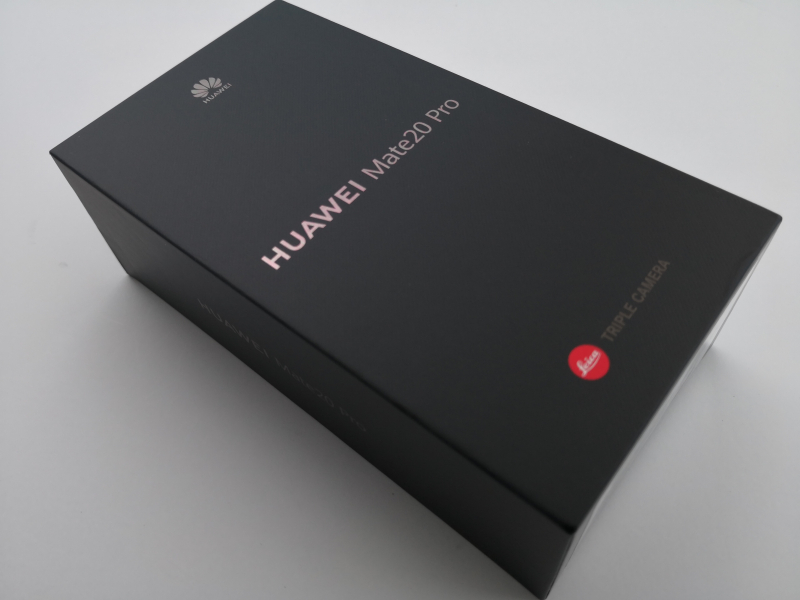
Like the Mate10 Pro, the Mate20 Pro also uses SuperCharge technology that has been certified by Germany based TUV Rheinland for safe charging compliance.

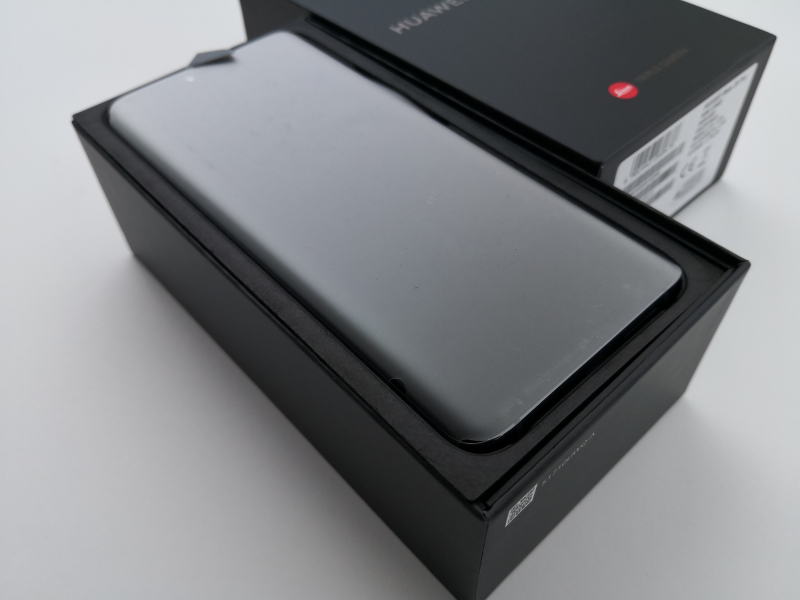
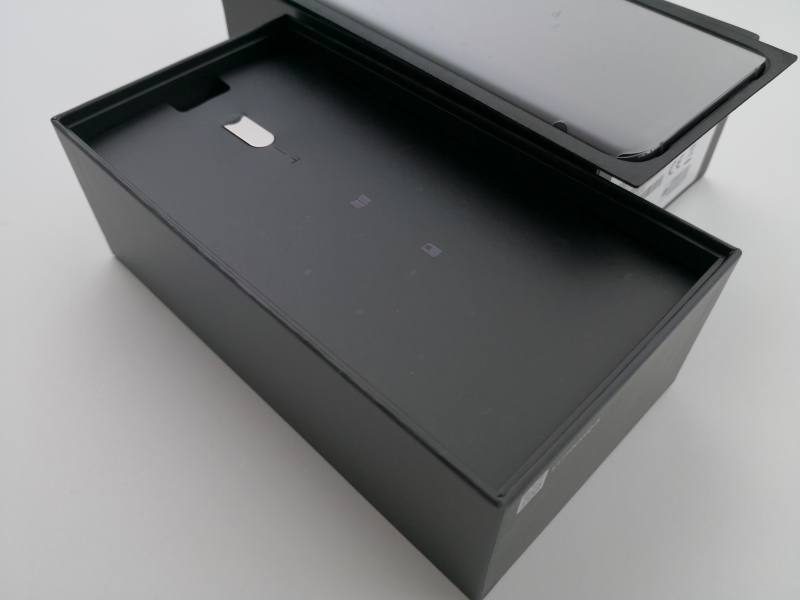
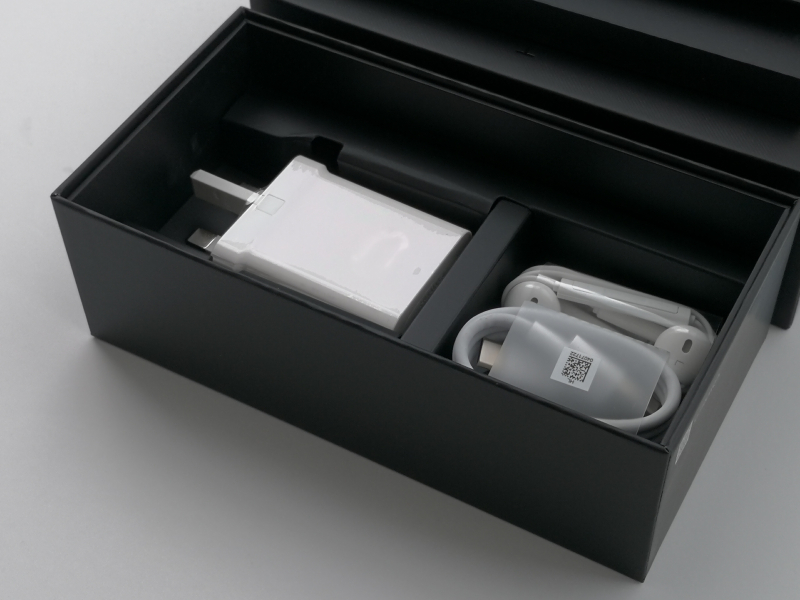
By including the Type-C to 3.5 mm headphone jack adapter with the Mate20 Pro, it doesn't look like Huawei is returning the 3.5 mm audio connector since it was removed from the Mate 10 Pro. The rest of the accessories are similar to that seen with previous Mate series which consist of earbuds, power charger, plastic phone cover and USB Type-A to USB Type-C cable.
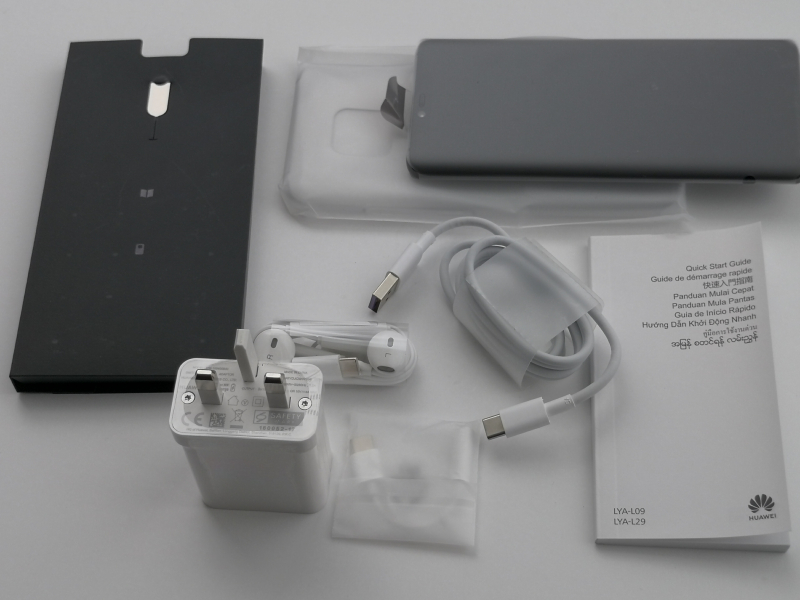
Huawei has bumped up its own SuperCharge charging up to 40W for the Mate20 Pro with the new Huawei SuperCharger that came with the phone. With 40 watts, the Mate20 Pro should get much faster charging than 22.5W previously supported by the older SuperCharger. The new Huawei SuperCharger supports 10 watts (5 volts @ 2 amps), 18 watts (9 volts @ 2 amps) and 40 watts (10 volts @ 4 amps) power profiles and should be connected using the supplied USB Type-A to Type-C cable for fastest charging.
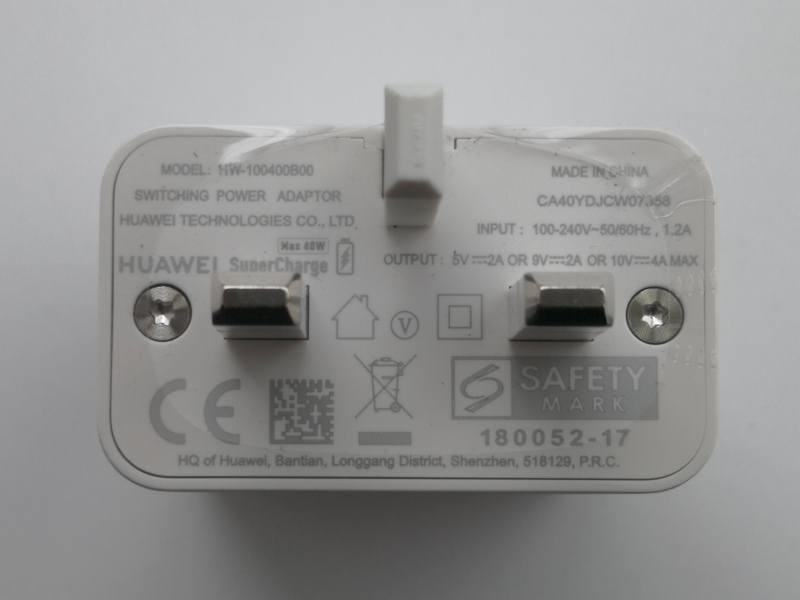
The Mate20 Pro keeps to the same Leica SUMMARIT-H branded cameras with 4K video capture capability as the Mate 10 Pro but has different camera positioning to accommodate the additional third camera.
Interestingly just like the Samsung Galaxy S10+, the fingerprint sensor has been shifted from the back of the phone to the bottom of the display for the Mate20 Pro. This makes it easier for the user to activate the phone on the front rather than from the back.


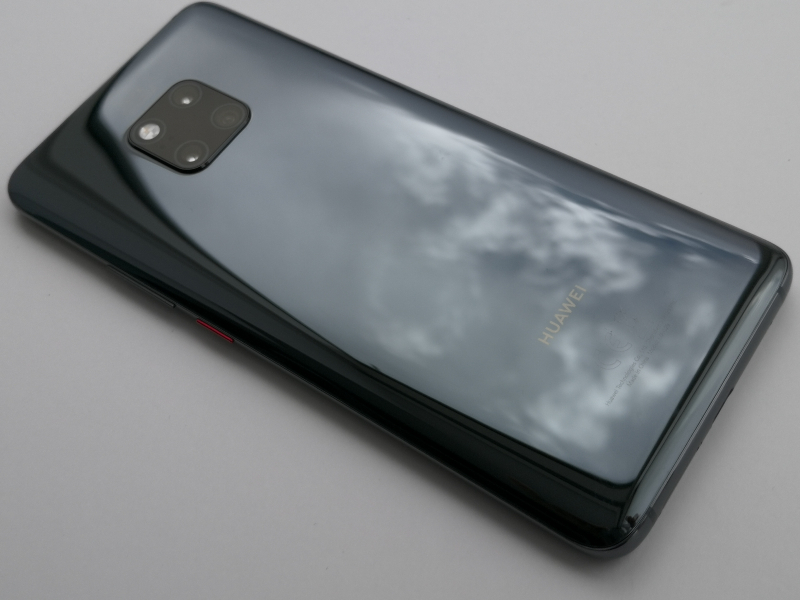
The Mate20 Pro has a larger display than previous models as well as a facial recognition feature which the latest Apple iPhones like the iPhone XS Max also supports. In a similar move, Samsung also increased the size of the screen for the Samsung Galaxy S10+.

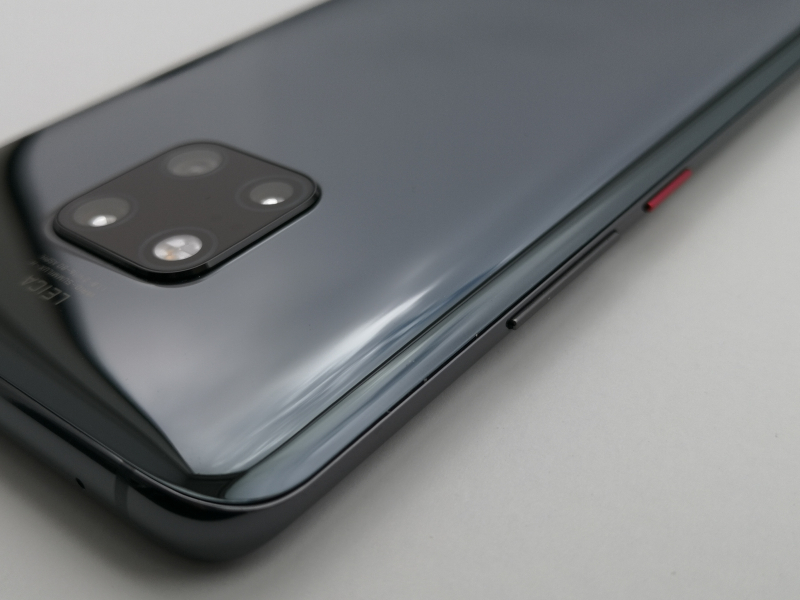
The red power button is a nice contrast to the volume buttons next to it.
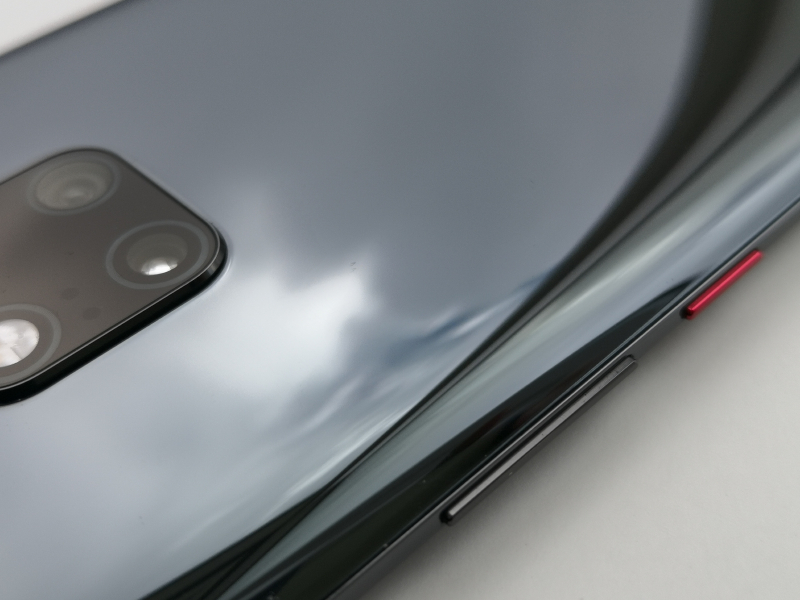
Just like the Mate 10 Pro, the USB Type-C connector of the Mate20 Pro supports USB 3.1 Gen 1 speeds and DisplayPort Alternate Mode along with Huawei's SuperCharge scheme and standard USB Power Delivery 2.0 technology for rapid charging.
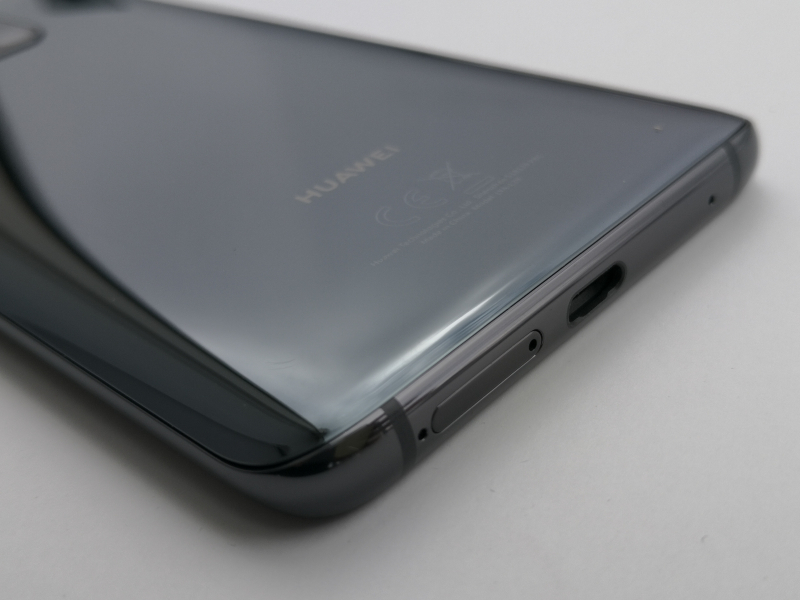
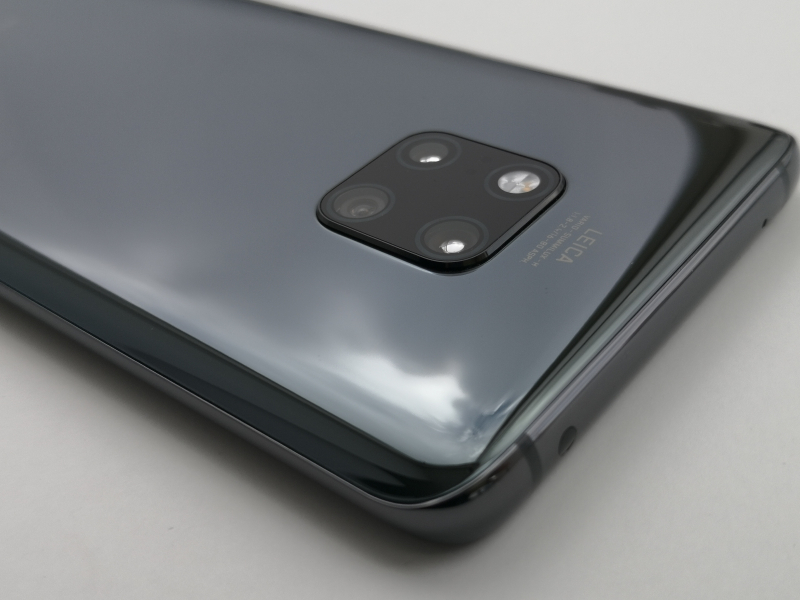
We can see how the Mate20 Pro supports power using the USB Power Test App from Granite River Labs with the Granite River Labs USB Power Delivery Compliance C2 Tester to perform the following tests.
The USB Power Test App first negotiates a power contract emulating the Source to determine the Power Delivery Sink capabilities of the Mate20 Pro. The USB Power Test App then reports out the voltage and current supported by the phone for each of the Source PDO's advertised to the phone.
| Sink Cap. | Voltage (V) | Current (A) |
|---|---|---|
| 5V | 5.08 | 1.89 |
| 6V | 5.08 | 1.9 |
| 7V | 5.11 | 1.89 |
| 8V | 5.11 | 1.88 |
| 9V | 9.08 | 1.68 |
| 10V | 5.09 | 1.9 |
| 11V | 5.08 | 1.9 |
| 12V | 5.09 | 1.89 |
| 13V | 5.06 | 1.88 |
| 14V | 5.09 | 1.89 |
| 15V | 5.05 | 1.88 |
| 16V | 5.08 | 1.88 |
| 17V | 5.11 | 1.88 |
| 18V | 5.06 | 1.89 |
| 19V | 5.08 | 1.89 |
| 20V | 5.07 | 1.88 |
The USB Power Test App from Granite River Labs also produces a voltage, current trace plot which graphically shows the voltage and current requested by the phone for each advertised Source PDO throughout the power negotiation.
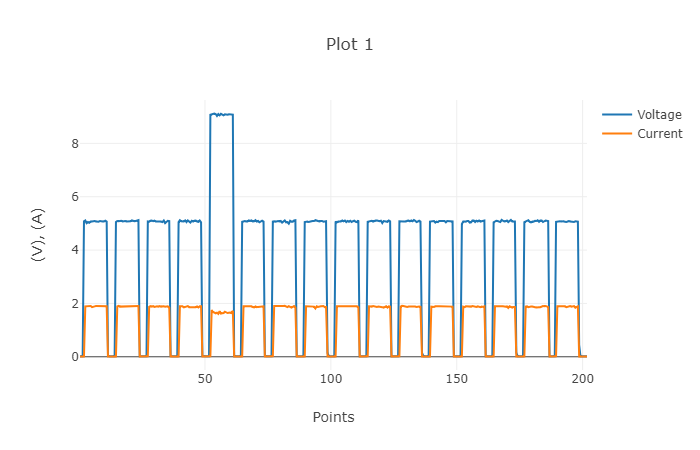
Using the USB Power Delivery Compliance C2 Tester from Granite River Labs to run just a subset of the full USB Power Delivery compliance test suite, we can see that the Mate20 Pro supports charging using 10 watts (5 volts @ 2 amps), 18 watts (9 volts @ 2 amps) and 5 watts (5 volts @ 1 amps) fixed PDO's. Some compliance failures were also observed.
Power Capabilities
Parameter
|
GetCapabilities
|
|---|---|
PD_POWER_AS_SOURCE
|
5000
|
NUM_SRC_PDOS
|
1
|
Supply Type #1
|
Fixed
|
Peak Current #1
|
0x0(A)
|
Voltage #1
|
0x64(5V)
|
Max Current #1
|
0x64(1A)
|
PD_POWER_AS_SINK
|
18000
|
NUM_SNK_PDOS
|
2
|
Supply Type #1
|
Fixed
|
Voltage #1
|
0x64(5V)
|
OP Current #1
|
0xC8(2A)
|
Supply Type #2
|
Fixed
|
Voltage #2
|
0xB4(9V)
|
OP Current #2
|
0xC8(2A)
|
USB-IF High Level Mapping Summary
Sl No
|
Test Category
|
Test Group Description
|
Test Result
|
|---|---|---|---|
1
|
PHY_PRIMARY_TX
|
BMC Physical Layer Transmitter
|
FAIL
|
2
|
PHY_PRIMARY_RX
|
BMC Physical Layer Receiver
|
FAIL
|
3
|
PHY_PRIMARY_MISC
|
BMC Physical Layer Miscellaneous
|
PASS
|
4
|
PROT_PRIMARY
|
Protocol Specific Primary
|
PASS
|
5
|
POWER_PRIMARY
|
Power Source/Sink Primary
|
PASS
|
Result Summary
Sl No
|
Test ID
|
Test Name
|
Test Result
|
|---|---|---|---|
1
|
TDA.2.1.1.1
|
TDA.2.1.1.1 BMC PHY TX EYE
|
FAIL
|
2
|
TDA.2.1.1.2
|
TDA.2.1.1.2 BMC PHY TX BIT
|
PASS
|
3
|
TDA.2.1.2.2
|
TDA.2.1.2.2 BMC PHY RX INT REJ
|
FAIL
|
4
|
TDA.2.1.2.1
|
TDA.2.1.2.1 BMC PHY RX BUSIDL
|
PASS
|
5
|
TDA.2.1.3.1
|
TDA.2.1.3.1 BMC PHY TERM
|
PASS
|
7
|
TDA.2.2.1
|
TDA.2.2.1 BMC PROT SEQ GETCAPS
|
PASS
|
8
|
TDA.2.2.2.1
|
TDA.2.2.2.1 BMC PROT SEQ CHKCAP P PC
|
PASS
|
9
|
TDA.2.2.2.2
|
TDA.2.2.2.2 BMC PROT SEQ CHKCAP NOMARK P PC
|
PASS
|
10
|
TDA.2.2.2.3
|
TDA.2.2.2.3 BMC PROT SEQ CHKCAP CP ACC
|
PASS
|
11
|
TDA.2.2.2.4
|
TDA.2.2.2.4 BMC PROT SEQ CHKCAP NOMRK CP ACC
|
PASS
|
16
|
TDA.2.2.7
|
TDA.2.2.7 BMC PROT BIST NOT 5V SRC
|
PASS
|
18
|
TDA.2.2.9
|
TDA.2.2.9 BMC PROT GSC REC
|
PASS
|
19
|
TDA.2.2.10
|
TDA.2.2.10 BMC PROT IGN PPS
|
PASS
|
20
|
TDA.2.3.1.1
|
TDA.2.3.1.1 POW SRC LOAD P PC
|
PASS
|
21
|
TDA.2.3.1.2
|
TDA.2.3.1.2 POW SRC LOAD CP ACC
|
PASS
|
22
|
TDA.2.3.2.1
|
TDA.2.3.2.1 POW SRC TRANS P PC
|
PASS
|
24
|
TDA.2.3.3.1
|
TDA.2.3.3.1 POW SNK TRANS C CP
|
PASS
|
25
|
TDA.2.3.3.2
|
TDA.2.3.3.2 POW SNK TRANS PC
|
PASS
|
BMC Eye Diagram
View Full Article
Featured Products
 GTrusted
GTrusted









